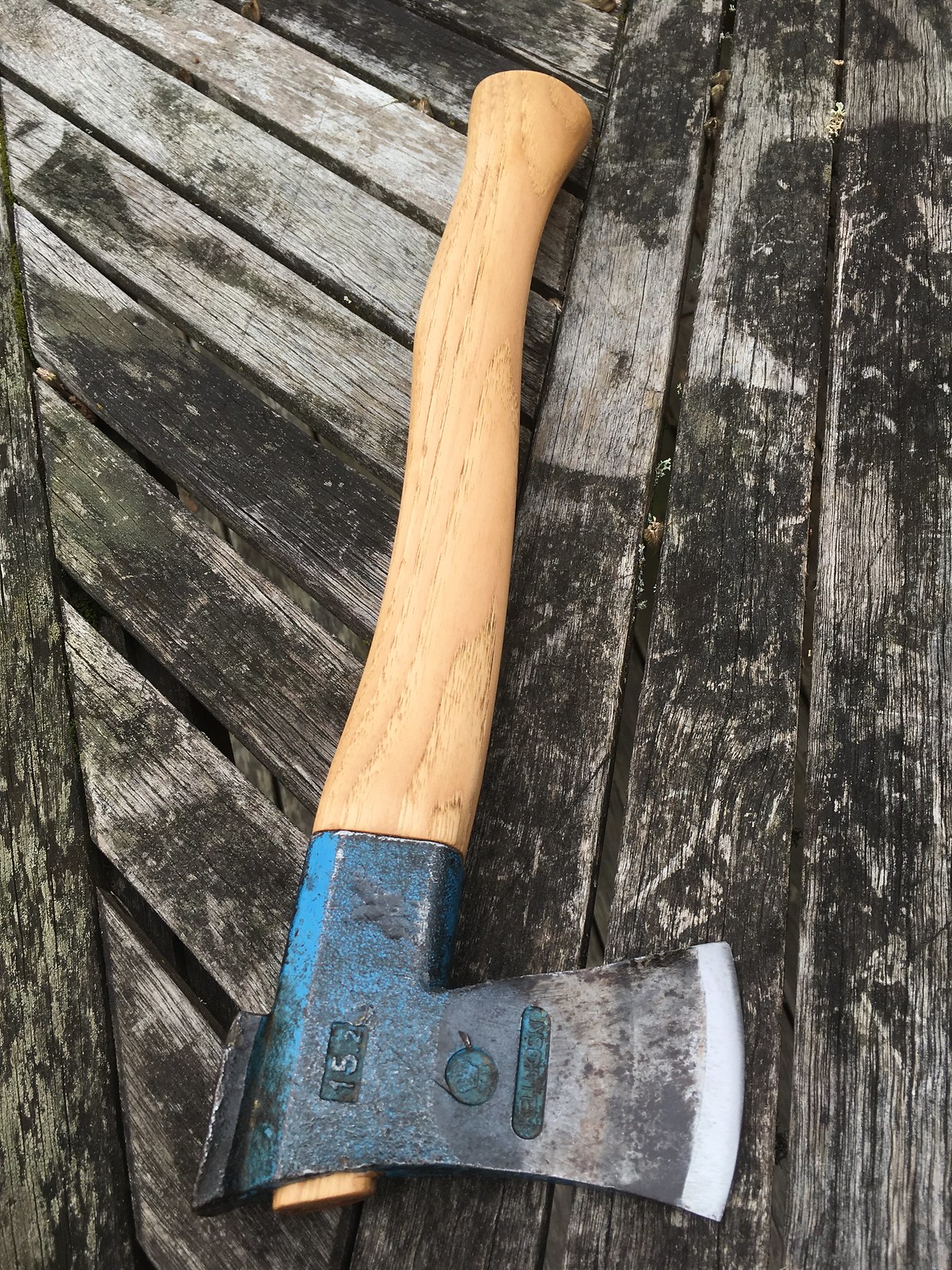- Joined
- Jun 25, 2017
- Messages
- 908
X
Last edited:
It cost me nearly $50 to send a rafting axe to Ontario.
Yeah Thats correct: My pocket is your ledge/shelf. When you do so, in essence your are limiting your handle usuage by how much room you have left between the ledge and the eye. Lets say its 3mm or 1/8 of an inch? When you need to tap it secure, that 3mm is all the room to get it seated again. Where as you don't have a ledge in the first place, you can just reseat it until you run out of handle to reseat it on. And from a history standpoint: They only did the ledges on the later models with the screws or nails in the handle to secure the head. It cut down on seating each and every haft in the factory. So it was only done from a labor saving perspective (all handles where bought in bulk, not made at the factory). Just make it fit like you would on a Goosewing, and it'll be fine.
There actually isn't one thats quite the same? The only one that comes close is the Dutch equivalent for "Actions speak louder than words" : "Geen woorden maar daden" (litteral translation: "No words but deeds") But as we both know, thats not quite the same. It the same as translating "Gezellig" to English. "Cozy" comes close, but it isn't quite te same. Language is a weird thing


I do not disagree with what has been said about inletting a collar into a handle. I only have two collared axes, and have only made a handle for one of them so take the following fwiw.
I have recently had an interest in carving and half dozen hatchets to experiment with. One of them is unidentified, but I believe it is the equivalent of a Kellokosken 15/3 veistokirves (Crafting ax). I used it with the inlet handle that came with it and liked it, but that handle was starting to split so I made a new one. I did not inlet the collar on the new one, I suppose for reasons previously mentioned. Right or wrong I am using these hatchets gripping close to the head. That's the way I've seen them used on YouTube instructional videos and seems best for ME. Now to get to the point (pun intended) here is a picture of of the hatchet:
After 5-10 minutes use (gripping shown above) the palm of my hand got pretty uncomfortable. Seems like a smooth transition from collar to handle would better suit my style.
Bob



Facebook:
Finnish Vintage Axes
Making the long-collared axe in the blacksmithing workshop in Estonian Academy of Arts.
https://www.facebook.com/finnishaxes/photos/a.735156353292364/1385199168288076/?type=3&theater
Bob
Don't doubt your observations. The subtitles of bevel forms are lost because this is too often an aspect proceeded on on the basis of unfounded assumptions. Terje Granas, who has looked into it said recently he could identify four different bevel configurations on Norwegian hewing axes alone, with in some cases a single edge having a geometry that changes along its length, and it should surprise no-one either, maybe you have even caught wind of the concept yourself in your studies. And don't believe either that it is a case of a casual attitude towards sharpening, which it is expressly not. Especially on this big pillu with its relatively straight edge profile the asymmetrical bevel as you describe must have an intension behind it which it would take a specialist in the technique to lay out. Lacking that it will be up to you to sharpen it, maintaining and noting the geometry as is, and providing your own analysis of its performance. I have delved slightly into the technique with my own piilukirves in the past and when looking at this one it strikes me as a mysterious example but one that could give you some surprising results.


Do you see what I see when I see that pedestaled pillu?


